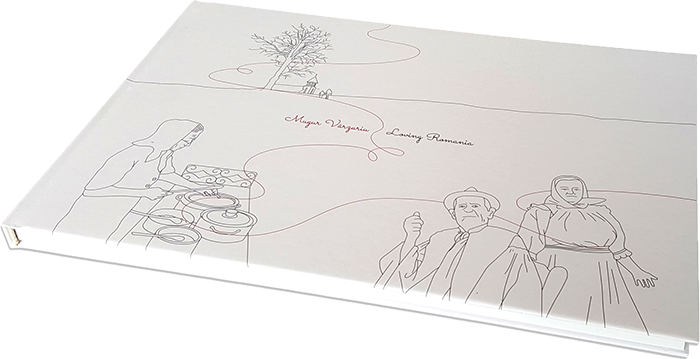Loving Romania
The reason I created this visual journey into the very essence of Romania was to develop an entrepreneurial platform to help fund my social involvement and activism.
I once gave a presentation at a high school in Bucharest, during which one of the teachers made a series of three terrible racist remarks. Looking at my photographs of people from disadvantaged groups, first of all she said: “They’re on the borderline between humans and animals”. She then went on: “It’s obvious these people don’t have a job.” And finally: “I’m sick of ugly images like these. Don’t you have any images that show a beautiful Romania?”
On hearing what she said, I promised myself that one day I would make a book like no other, which would present three aspects of Romania: people, places and food, and that I would use the money from sales to fight discrimination, as a defender of human rights and a speaker of truth to power.

People: a glimpse into the rarely seen yet familiar life of people and communities, where you get to taste the effervescence of the everyday. Whether it be our parents, our grandparents, or simply people we love and want to spend time with us.
Places: from the Black Sea to the mountains, from the historical regions to the Danube Delta, viewers will enjoy the natural beauty of Romania.
Food: at every step, viewers will discover old Romanian dishes, from various ethnic groups and regions of the country. Food is at the centre of our existence; it is the one thing that brings families together, with an unbreakable bond.
We always hear Romanians saying that Romania is a beautiful country. I would go a little farther: I have always said that our whole planet is beautiful. But every country has a special something and powerful nations have been able to discover that special something and use it to their own advantage. We have hardiness. And when we finally succeed in interweaving it with compassion, we will gain a place among the most powerful nations.
Setting out from this premise, I wished to discover a Romania that was not only beautiful, but immediately reminded me of my childhood. I decided to open the door and enter the world of parents and grandparents in various corners of the country and to ask them to cook me something representative of their region or ethnic group.
Although it includes eighteen recipes, this is not a book about food. It is a foray into the three fundamental dimensions of our nation.
It is a book about people and about their everyday life, about their work, their customs and their joys. It is also a book about our regions, about lesser-known places, about unique places, about places that nostalgically remind us of how Europe looked two centuries ago.
Not least, it is a book about the recipes on which our grandparents raised us, the recipes with which we regaled friends and guests, which we cooked from happiness or as a comfort.
Book facts:
For the Loving Romania illustrated book, Mugur travelled more than twenty-thousand kilometers over the course of four years and invested more than thirty-thousand Euros in petrol, accommodation, and image processing, and more than fifty-thousand Euros in printing costs and professional equipment.
Over the course of seven years of social activism and human rights work, Mugur travelled more than one hundred thousand kilometers, spent tens of thousands of Euros and worked thousands of hours on behalf of communities and to promote the cause of the underprivileged in general and the Roma minority in particular.




